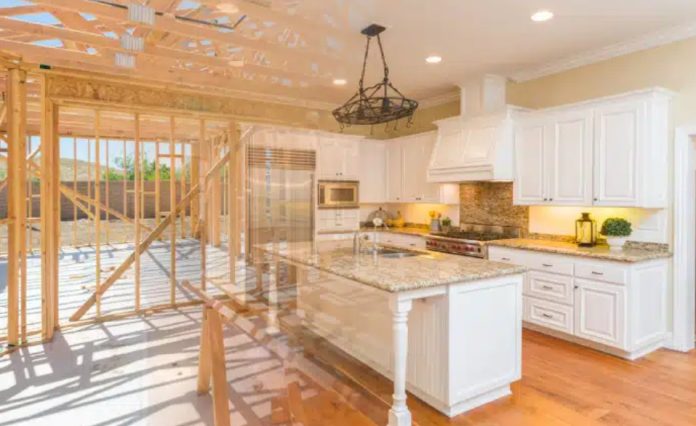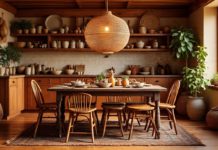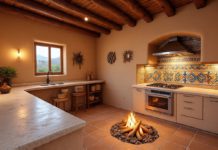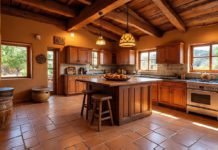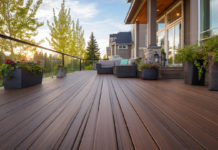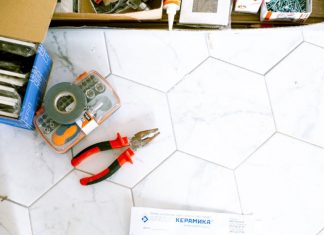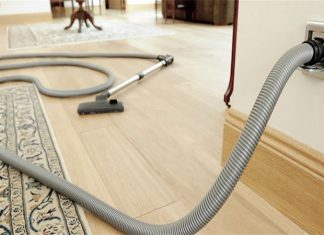Introduction
Transforming your kitchen can be one of the most rewarding home improvement projects. One of the most impactful ways to revamp your space is by creating your own kitchen cabinets. With the rise of DIY culture, more homeowners are embracing the challenge to design, build, and install do it yourself kitchen cabinets. Not only does this approach offer significant cost savings, but it also allows you to tailor the cabinets to fit your unique style and functional needs. In this guide, we’ll walk you through every step of the process, from the initial design phase to the final installation, so you can achieve professional results without breaking the bank.
Why Choose to Do It Yourself?
Choosing to build your own kitchen cabinets offers numerous advantages, especially when it comes to cost and creativity.
- Cost-Effective: One of the most appealing aspects of DIY kitchen cabinets is the potential to save a substantial amount of money. Custom cabinets can be expensive, but by doing it yourself, you can allocate your budget more efficiently, focusing on quality materials rather than labor costs.
- Creative Control: DIY projects provide an unparalleled level of creative freedom. You can choose everything from the wood type and finish to the hardware and layout, ensuring that your cabinets perfectly match your kitchen’s aesthetic.
- Skill Development: Building your own cabinets is also a fantastic opportunity to develop new skills. Whether you’re a seasoned DIY enthusiast or a complete beginner, you’ll learn valuable techniques that can be applied to future projects, enhancing your overall handyman expertise.
By opting for do it yourself kitchen cabinets, you’re not just saving money—you’re also investing in your own abilities and creating a truly personalized kitchen space.
Designing Your DIY Kitchen Cabinets
Before you start building, it’s essential to have a clear and well-thought-out design plan. This stage is crucial for ensuring that your cabinets meet both your aesthetic preferences and functional requirements.
Assessing Your Kitchen Layout
The first step in designing your DIY kitchen cabinets is to assess your kitchen’s current layout.
- Measure Your Space: Take precise measurements of your kitchen area. This includes the length and height of the walls where the cabinets will be installed, as well as the dimensions of any appliances or fixtures that need to be accommodated.
- Identify Storage Needs: Consider how you use your kitchen and what your storage needs are. Do you require more drawer space for utensils or deep cabinets for pots and pans? Tailor your design to meet these needs.
Choosing Materials
The material you choose for your kitchen cabinets will significantly impact both the appearance and durability of your project.
- Wood Types: Popular options include oak, maple, and cherry, each offering different grains, colors, and durability. For a more budget-friendly option, consider plywood with a wood veneer.
- Eco-Friendly Options: If sustainability is a priority, look into eco-friendly materials like bamboo or reclaimed wood. These not only reduce environmental impact but also add a unique character to your kitchen.
Planning the Cabinet Layout
Once you’ve measured your space and chosen your materials, it’s time to plan your cabinet layout.
- Blueprints and Design Software: Creating a blueprint or using kitchen design software can help you visualize the final look. Consider the workflow in your kitchen—make sure the placement of cabinets makes sense for cooking and cleaning activities.
- Ergonomics and Accessibility: Ensure that your cabinets are accessible and easy to use. Think about the height of shelves, the depth of drawers, and how easy it is to reach items stored in the back.
Budgeting for Your DIY Project
Finally, before you start building, it’s important to establish a budget.
- Estimating Costs: Factor in the cost of materials, tools, and any additional hardware like hinges and handles. Don’t forget to include a buffer for unexpected expenses.
- Staying Within Budget: To keep costs down, consider sourcing materials from local suppliers or reclaiming wood from previous projects. Being mindful of your budget throughout the process will help you avoid overspending.
Building Your DIY Kitchen Cabinets
Now that you have a solid design plan in place, it’s time to start building your do it yourself kitchen cabinets.
Gathering the Right Tools
Having the right tools is crucial for a successful DIY project. Here’s a list of essentials:
- Saws: A table saw or circular saw for cutting wood panels, and a jigsaw for intricate cuts.
- Drills: A power drill with various drill bits for making holes and driving screws.
- Clamps: To hold pieces in place while you work.
- Safety Gear: Gloves, safety glasses, and a dust mask to protect yourself while working.
Cutting and Preparing the Wood
With your tools ready, you can begin the process of cutting and preparing the wood for your cabinets.
- Cutting the Wood Pieces: Using your measurements, cut the wood panels to size. Ensure all cuts are straight and accurate to avoid any alignment issues during assembly. A table saw is ideal for making long, straight cuts, while a jigsaw can handle more detailed work.
- Sanding and Prepping: Once the pieces are cut, sand all surfaces to remove any rough edges and ensure a smooth finish. Start with a coarse grit sandpaper and gradually move to a finer grit for a polished look. This step is crucial for achieving a professional appearance in the final product.
Assembling the Cabinets
After preparing the wood, it’s time to assemble the cabinets.
- Building the Cabinet Frame: Begin by assembling the sides, top, and bottom of the cabinet box. Use wood glue and clamps to hold the pieces together before securing them with screws. Make sure the corners are square and the frame is sturdy.
- Attaching the Back Panel: Once the frame is assembled, attach the back panel using finishing nails or screws. The back panel provides structural support and ensures the cabinet remains square.
- Installing Shelves: Depending on your design, you may need to install fixed or adjustable shelves. For adjustable shelves, drill a series of evenly spaced holes along the sides of the cabinet and use shelf pins to support the shelves.
Adding Finishing Touches
The finishing touches can make all the difference in the overall appearance of your do it yourself kitchen cabinets.
- Installing Doors and Hardware: Attach the cabinet doors using concealed hinges for a clean look. Make sure the doors are properly aligned and open and close smoothly. Then, install the hardware such as handles or knobs, ensuring they match the style of your kitchen.
- Painting or Staining: To protect the wood and enhance its appearance, apply a coat of paint or stain. If you’re painting, use a primer first to ensure even coverage. For staining, apply a wood conditioner before the stain to achieve a consistent finish. Finally, seal the surface with a clear protective coat to enhance durability.
Installing Your DIY Kitchen Cabinets
Once your cabinets are built, the final step is installation. Proper installation is key to ensuring your cabinets are both functional and aesthetically pleasing.
Pre-Installation Preparations
Before you begin the installation, take time to prepare the space.
- Clearing the Kitchen Space: Remove any old cabinets and ensure the kitchen area is clean and free of debris. Double-check your measurements against the actual space to ensure a perfect fit.
- Leveling the Walls and Floors: Use a level to check that your walls and floors are straight and even. If there are any discrepancies, you may need to make adjustments during installation to ensure your cabinets sit correctly.
Mounting the Upper Cabinets
Begin the installation process by mounting the upper cabinets.
- Marking the Wall: Use a pencil to mark the position of the cabinets on the wall, starting with the top of the cabinet. Be sure to account for the height of your countertops and any space you want to leave above the cabinets.
- Securing the Cabinets: Attach a temporary support ledger to the wall at the base of where the cabinets will sit. This will hold the weight of the cabinets as you secure them to the wall. Use screws to fasten the cabinets to the wall studs, ensuring they are level and evenly spaced.
Installing the Base Cabinets
Next, install the base cabinets.
- Positioning the Cabinets: Place the base cabinets in position, starting with the corner unit if applicable. Use shims to level the cabinets if necessary, ensuring they align with the marks on the wall.
- Securing the Cabinets: Just like with the upper cabinets, use screws to fasten the base cabinets to the wall. Check for levelness as you go, making adjustments as needed.
Final Adjustments and Quality Check
Once all cabinets are in place, perform a final inspection.
- Inspect for Gaps: Check for any gaps between cabinets or between the cabinets and the wall. Use caulk or filler strips to close any gaps for a seamless finish.
- Adjusting Doors and Hardware: Make any final adjustments to the doors and hardware, ensuring everything is aligned and functioning correctly.
Tips and Tricks for a Professional Finish
To ensure your DIY kitchen cabinets look as professional as possible, here are some tips and tricks.
Common Mistakes to Avoid
- Overlooking Measurements: Accurate measurements are crucial. Double-check all dimensions before cutting.
- Rushing the Finish: Take your time with painting or staining. Multiple thin coats will yield a better result than a single thick one.
Advanced Techniques for a Custom Look
- Adding Moldings and Trim: Crown moldings or decorative trims can add a touch of elegance to your cabinets, giving them a high-end look.
- Incorporating Lighting: Installing under-cabinet lighting can enhance the functionality of your kitchen and add ambiance.
Maintenance Tips for Longevity
- Regular Cleaning: Keep your cabinets clean by wiping them down regularly with a damp cloth and mild detergent.
- Seasonal Checks: Inspect your cabinets seasonally for any signs of wear or damage. Address any issues promptly to prevent further deterioration.
Conclusion
Embarking on a DIY kitchen cabinet project can be a highly rewarding experience, offering both financial savings and the satisfaction of creating something uniquely yours. By following the steps outlined in this guide, you can design, build, and install do it yourself kitchen cabinets that rival professional craftsmanship. Whether you’re motivated by budget constraints or a desire for a personalized touch, this project allows you to transform your kitchen into a space that truly reflects your style and needs. So, gather your tools, roll up your sleeves, and get ready to bring your dream kitchen to life.
